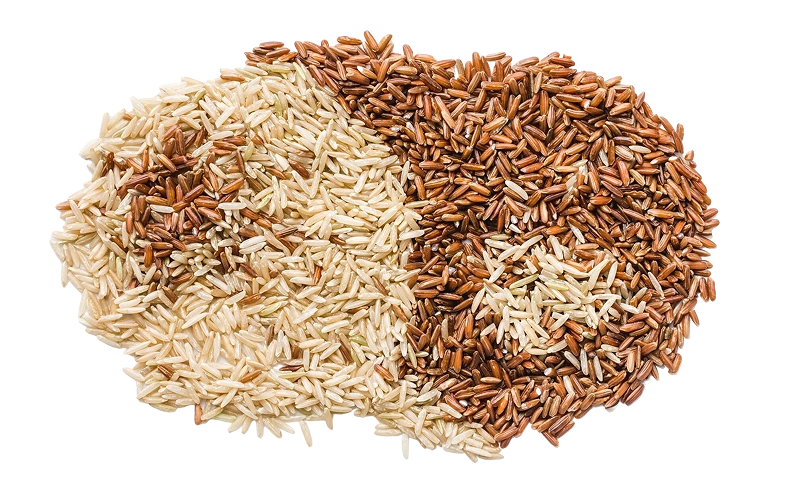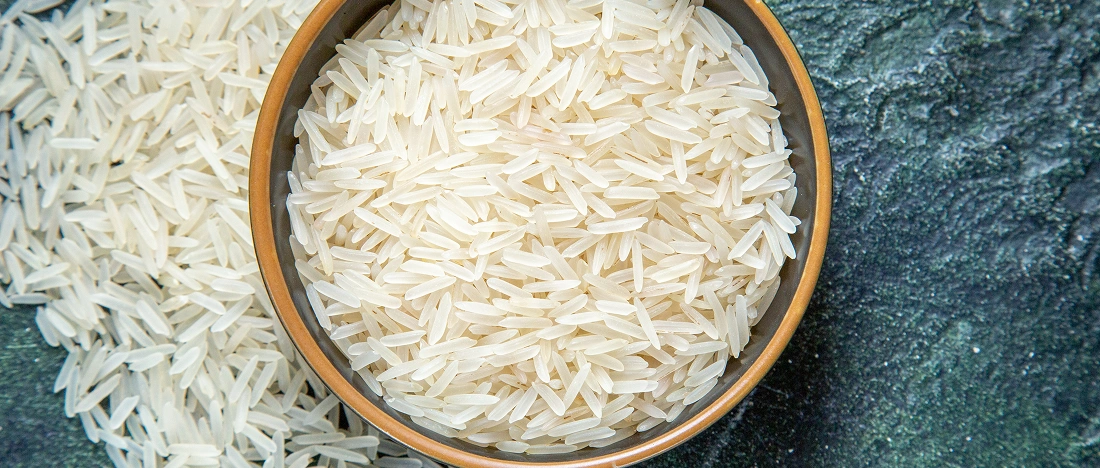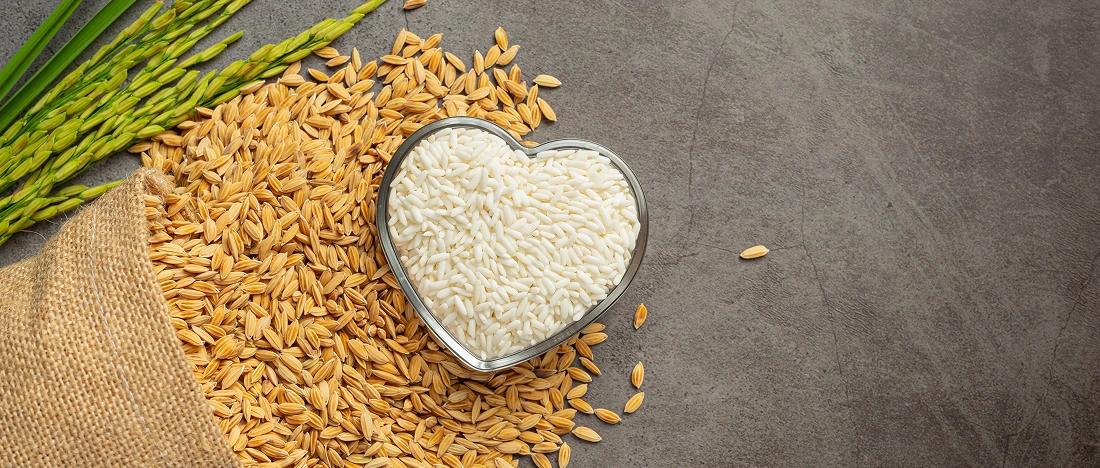Rice vs Wheat: Which One Is Healthier for Your Diet?

Table of Contents
Many people ask if rice or wheat is a healthier choice for their daily meals. Both are basic grains that nourish billions of people around the world, yet they are very different when it comes to nutrition, digestion, and long-term health. People favor rice because it is light and easy to digest, although wheat is considered to provide more protein and fiber. This choice matters for people aiming to lose weight, maintain steady blood sugar levels or simply eat healthier.
In this blog, we break down the nutrition facts, weight-loss potential, and glycemic impact of rice and wheat, along with practical tips to help you choose the grain that best suits your lifestyle and wellness goals.
Nutrient Comparison
Here is a quick side-by-side look at cooked servings (approximate values from USDA FoodData Central ):
| Nutrient (per cooked 1 cup) | White Rice | Brown Rice | Whole-Wheat Bread/Pasta |
|---|---|---|---|
| Calories | 205 | 218 | 175–220 |
| Carbohydrates (g) | 45–53 | 45–50 | 36–45 |
| Protein (g) | 4 | 4.5 | 7–9 |
| Fiber (g) | 0.5–1 | 3–4 | 3–6 |
| Key Insight | Quickly digested, low fiber | More fiber & micronutrients | Higher protein & fiber |
Looking for wholesome grains? Explore Keshar Kali’s premium rice collection, including Farm Magic Brown Rice and Wada Kolam for a nutritious upgrade.
Rice: The Comfort Grain
Rice is a staple across Asia, Latin America, and much of Africa. It is good for people of all ages because it is light and easy to digest. But not all rice is the same.
- White rice is polished and refined, making it soft but lower in fiber and micronutrients.
- Brown rice gives more vitamins, minerals, and fiber.
- Wada Kolam and fragrant Basmati are two examples of specialty rices that have different effects on blood sugar levels and nutritional value.
Pros of Rice
- Easy to digest, good for people recovering from illness.
- Gluten-free, suitable for people with celiac disease.
- Versatile: works in porridges, pulao, idlis, and desserts.
Cons of Rice
- White rice has high glycemic index (GI), leading to faster blood sugar spikes.
- Low in protein compared to wheat.
- Less filling unless combined with vegetables or pulses.
Want to add nutrition without giving up taste? Try Keshar Kali Farm Magic Brown Rice. It’s high fiber keeps you full longer while offering authentic flavor.

Wheat: The Breadbasket Grain
Wheat is central to flatbreads, pasta, and baked goods worldwide. Like rice, wheat can be consumed in refined or whole-grain form.
- Refined wheat flour (maida) is used in white bread, noodles, and pastries, and is often linked with weight gain when eaten excessively.
- Whole wheat keeps the bran and germ, which makes it higher in fiber, protein, and minerals.
Pros of Wheat
- Higher in protein than rice.
- Whole-wheat products provide more fiber, improving digestion and satiety.
- Good source of magnesium, B vitamins, and iron.
Cons of Wheat
- Contains gluten, unsuitable for those with gluten sensitivity or celiac disease.
- Highly processed wheat products (like pastries, cookies, white bread) can be as harmful as refined rice.
- Overconsumption may cause bloating in some people.

Rice vs Wheat Nutrition: The Key Differences
When looking at rice vs wheat nutrition, here are the standout points:
- Fiber: Whole-wheat products typically offer more dietary fiber than white rice. Brown rice helps close the gap.
- Protein: Wheat delivers more protein per serving, but rice can still complement legumes for a complete amino acid profile.
- Micronutrients: Both can be good sources of B vitamins and iron if consumed in whole-grain forms. White rice often requires fortification to match wheat.
- Blood Sugar: Brown rice and whole-wheat chapatis both have a lower GI compared to their refined versions.
Boost your diet with Keshar Kali’s Wada Kolam Rice, a traditional variety packed with nutrition. Order now.

Rice vs Wheat for Weight Loss
Weight management is more dependent on total calorie intake and satiety than on any specific grain. There are still some distinctions between rice and wheat when it comes to losing weight:
- Whole grains (brown rice, whole wheat) increase satiety due to fiber. This helps reduce overeating.
- White rice digests quickly, which may lead to hunger sooner.
- Combining rice with lentils, vegetables, or lean proteins creates a balanced plate that supports weight control.
If your goal is weight loss, neither grain needs to be eliminated. Instead, control portions, prefer whole grains, and build balanced meals.
Glycemic Index and Blood Sugar Control
For people with diabetes or insulin resistance, the glycemic index (GI) is crucial.
- White rice has a higher GI, especially short-grain varieties.
- Brown rice and parboiled rice show a moderate GI, making them better choices.
- Whole wheat chapati generally has a lower GI than refined flour bread.
Try Farm Magic Brown Rice from Keshar Kali. Its fiber content helps stabilize blood sugar while offering a traditional taste.
Cooking and Cultural Context
Food is more than just numbers—it represents culture, tradition, and comfort. Biryani, sushi, and risotto are all foods that use rice as their main ingredient. Rotis, parathas, and pastas all need wheat.
How you cook these grains matters:
- Steaming and boiling rice with minimal oil is healthier than frying it.
- Choosing whole-wheat pasta over white pasta keeps meals more filling.
- Pairing rice or wheat with legumes (dal, chickpeas, beans) creates a complete protein.
Practical Tips to Choose Between Rice and Wheat
- Mix and Match: Alternate between rice and wheat through the week to balance nutrition.
- Choose Whole Grains: Replace white rice with brown rice or parboiled rice, and white bread with whole-wheat chapati.
- Watch Portion Sizes: One serving of rice should be about ½ to 1 cup cooked. For chapatis, 1–2 small whole-wheat rotis are sufficient.
- Balance the Plate: Fill half of your plate with vegetables, one-quarter with grains, and one-quarter with protein.
Use high-quality Keshar Kali rice types like Wada Kolam and Brown Rice to make your meals better. Take a look at everything.
Scientific Evidence and Expert Insights
Research has consistently shown that eating whole grains lowers the risk of chronic diseases.
- According to the Harvard School of Public Health, consuming more whole grains is connected with lower rates of heart disease, mortality, and type 2 diabetes.
- Studies in the BMJ and the American Journal of Clinical Nutrition confirm that replacing refined grains with whole grains supports weight control and better metabolic outcomes.
Conclusion
The debate over rice vs. wheat has no clear winner. The healthiest option is determined by diversity, processing, and the general structure of your diet. Brown rice, parboiled rice, and whole-wheat items are healthier choices for keeping your weight in check and being healthy over the long run.
If you’re looking to upgrade your diet without compromising on taste or tradition, Keshar Kali offers carefully sourced, traceable rice varieties—from Farm Magic Brown Rice to Wada Kolam—designed to give you authentic flavor and better nutrition.
Make the switch today. Shop Keshar Kali Rice Varieties and bring healthier, tastier grains to your kitchen.
FAQ
Is rice healthier than wheat?
Not always. Rice could be healthy if we pair it with protein, good fats, and fiber.
Which is better for weight loss — rice or wheat?
Both can fit into a weight-loss diet. Whole grains, controlled portions, and balanced plates are key.
Can people with diabetes eat rice?
Yes, but offering brown rice, parboiled rice, or a small amount of low-GI rice with vegetables and proteins is preferable.
